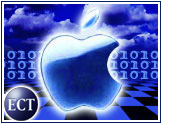
Before Steve Jobs retook the reins at Apple Computer (Nasdaq: AAPL) in 1997, many in the industry had begun to sound the death knell for the innovative but beleaguered company.
But in a stunning turnaround, Apple pulled itself out of a pool of red ink and began booking positive earnings. Now, despite shrinking market share — about 4 percent compared with Windows’ 95 percent — Apple is holding its own and making money.
One key reason for the company’s success is its ability to sell both software and hardware at reasonable margins — a goal that has eluded many PC makers, which have found their hardware products commoditized. In fact, hardware is “still Apple’s bread and butter,” Roger Kay, director of client computing at IDC, told the E-Commerce Times.
Margin Envy
While detractors periodically slam Apple for the relatively high sticker prices of its computers — the industry widely criticized Jobs when he revoked the licenses of Mac clone makers, which produced lower-priced machines, several years ago — the company’s strategy seems to have paid off. Apple has carved out a small but profitable niche among an influential group of users, primarily consumers.
In addition, the company understands that future growth in the PC market will occur, as a Forrester study noted, as consumers upgrade or replace existing computers. That may be one reason why the company has been aggressive with its “Switch” ad campaign, which showcases users who have migrated from Windows to Mac and urges others to follow suit. In July, Jobs said the campaign had been successful, luring more than 1.7 million unique visitors to the “Switch” Web site, 60 percent of whom logged in from Windows machines.
Features Galore
Jobs and his cohorts also are taking advantage of Microsoft’s negative publicity, including reports that suggest the Redmond, Washington-based software giant has been overbearing, invasive and misguided in its attempt to restructure licensing terms for its software.
In addition, Apple followed up its marketing efforts by releasing Mac OS X version 10.2, also known as Jaguar, which makes it much easier for consumers to switch to the Mac platform, according to Forrester research director Carl Howe. “Jaguar 10.2 has a lot better support for a Windows network, so I can mount all the Windows file shares from here,” Howe told the E-Commerce Times. “I can browse the network just like the Windows guys do.”
Wow Them Again
However, if Apple is to continue its trek through the land of black ink, it will have to produce even more innovations like those it has been hailed for in the past.
“Everyone is wondering if Apple can repeat the success it had with iPod,” Giga Information Group analyst Ken Smiley told the E-Commerce Times. Jobs has declared publicly that the iPod, a handheld device that can store several gigabytes of audio and other files, is a way for Apple to worm into the Windows world and lure consumers away from Microsoft products.
Apple also has spent a great deal of time developing software like Rendezvous, iChat and iSync. These programs help users communicate more easily and synchronize data on handhelds, laptops, cell phones and desktops. Their capabilities are intended not onlyto endear the company to its existing user base, but also to attract newcomers who may be sitting on the fence.
Enterprise Chances
There might even be some room for Apple in the enterprise market if the company can anticipate business needs and innovate in the space, according to Smiley. As a role model, he cited Research In Motion (Nasdaq: RIMM), which bested Palm (Nasdaq: PALM) by producing and selling a targeted wireless e-mail application while Palm was focused on providing users with a way to browse the Web on their handhelds. “Apple could have done that [e-mail] application,” Smiley said.
Brian Croll, Apple’s senior director of software and worldwide product marketing, told the E-Commerce Times that the company will probably attractenterprise users with iSync, which, among other things, allows companies to network printers without the usual torturous configuration work.
Less likely is that Apple will make inroads into the enterprise through the Xserve,which it unveiled during the summer. According to Smiley, Unix, Microsoft and Linux servers already dominate the enterprise, and Apple does not bring anything compelling to the table. “It doesn’t have the power of a Unix server, it doesn’t have the application support of a Microsoft [server], and it isn’t free like Linux,” he said.
Building on Mac
Although Apple has achieved financial solvency in a difficult climate by knowing its audience and preserving its margins, the company’s struggle is not over. According to experts, Apple must lure developers to the Mac platform to extend its profit streak. “They are moving beyond the box, as everybody is,” said Kay, “trying to develop new revenue streams.”
He added that the company’s future success “depends on ga-ga design. Like a Milanese fashion show, they have to hit it exactly.”
The company also needs to get a better handle on marketing costs and learn to synch inventory with demand, according to Kay. He noted that Apple spends a significant number of dollars on advertising and marketing. By doing so, the company successfully created a buzz about and demand for its 15-inch flat-panel iMac, but actually generated too much heat and sold out of iMacs. It then scrambled to produce more units, only to end up with excess inventory.
“They did a poor job of supply chain management,” Kay said.

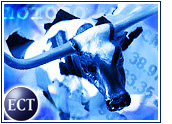
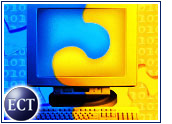
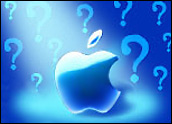
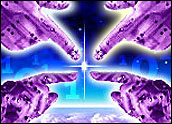
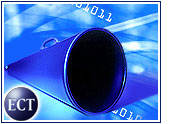
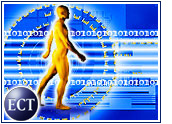


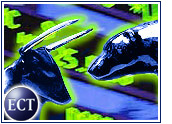

































Great story, I agree with the writer 100%.
On your point #2, XServe is using a Unix-based OS, but certainly not a UNIX box. Mac OS X Server lacks all the things that makes UNIX. This is the reason why they didn’t send Mac OS X Server to The Open Group for certifications.
.
And on your point of Linux, Linux mainly runs on commodity hardware, which is growing faster and faster, unlike the PowerPC, which is almost stagnant. This brings down a lot of cost. Notice, the ONLY benchmark against a Dell server was done with a Dell server MUCH cheaper than the XServe.
.
Also, Linux has other compelling stuff. Speed is one. From my experience, in running stuff like sendmail, Apache, PostgreSQL, is that they all run faster on Linux than on Darwin. They even run on FreeBSD faster than on Darwin, so i don’t think it is a BSD problem. the problem is that Darwin is a microkernel, and we all know that microkernels aren’t as fast as monolistic ones.
Heaven preserve us from unix snobs b*tching back and forth about whether or not Apple makes a UNIX system. What a worthless argument. I open Terminal on my iMac, and type ls /usr/local/bin, to see what I shall see. I run MySQL locally. I use sftp from the command line, and ssh. I can run X-Windows, hell, even Gnome last I heard. But it’s not a UNIX system. It’s like a unix system. Or it’s UNIX based. Lord almighty. Technically, Linux isn’t UNIX either. It’s only UNIX based. Or Like UNIX. If it looks like a UNIX, and it smells like a UNIX…
And god help us with benchmarking. Really. "My OS is .5 milliseconds faster with some DB app. Neener neener neener." Sigh.
p.s. It’s Monolithic, not monolistic.
p.p.s. I like Linux. Free is good, though you get what you pay for, in my experience.
"And on your point of Linux, Linux mainly runs on commodity hardware, which is growing faster and faster, unlike the PowerPC, which is almost stagnant. This brings down a lot of cost. Notice, the ONLY benchmark against a Dell server was done with a Dell server MUCH cheaper than the XServe."
I don’t consider $300 much cheaper, especially since the Dell had 1/3 more clockspeed! And with a $2500 unlimited Win2k user license, I hardly would call the Dell server cheap!
In response to mrande: It’s not "like" a Unix system; it is a Unix system. So is Linux. Where do you define what a real Unix system is, anyway? I guess BSD isn’t a real Unix system, and there haven’t been any "real" Unix systems since the second version of Unix came out. Is Windows 2000 "like" a Windows system now that Windows XP is out? Duh.
Heaven preserve us from people who want to split hairs over a name when everybody else seems to understand what is meant by its use.
/s.
I do not know where you pull your sources but time and time again they let you down but time and time again you continue to use them.
"The Economics of Apple" sounded like it could have had some good content but it was just another babble.
To Cas, I think you need to cut Adobe and MS a little slack in the sense that they have millions and millions of lines of code that needs to be rewritten for Cocoa and it takes a lot of time and resources to do that. Saying that, they have both done a pretty terrible job of utilising Carbon IMO.
Do your writers purposely bait for reader criticism?
See the inaccuracies pointed out above – is it simply that your writers are unfamiliar with the Mac OS and related hardware?
It’s all well and good to write a news piece citing industry experts, analysts and watchdogs, but basic fact-checking is also the writer’s responsibility … unless you want to cause a stir on your boards.
Smiley said, "[Apple’s Xserve+OS X] doesn’t have the power of a Unix server".
Does this guy have a brain in his head? Um, unless I’m absolutely braindead OS X *IS* Unix. It’s FreeBSD to be exact, along with some Mach Kernel and Apple tinkering but essentially it’s Unix at its very core.
Amazing the ineptness of Apple naysayers.
Wow, nice hatchet job guys.
Your article is full of inaccuracies and as such the credibility of your analysis is questionable at best.
1) It’s Rendezvous that will simplify networking printers – not iSync
2) With respect to XServe – Actually, it is a Unix server, so I’m not sure what you mean by not having the power of a Unix server. It competes handily against a number of Sun boxes. When you buy an XServer the OS IS free – like Linux. The application support point might be valid, but in enterprise environment you have to have the database support before you woo the CRM and ERP crowd. Oracle is in beta and Sybase is shipping. If they can get DB2 they’ll have all three of the major players in the DB world. All the open source stuff is already running on XServe.
This is the same sort of 7th-level pessimism the tech press has been throwing at Apple for years. After a while it gets to be "the boy who cried wolf" syndrome.
Watch, listen & learn. Apple is the only company out there showing just what can be done when open standards is fully leveraged.
Ron
"According to Smiley, Unix, Microsoft and Linux servers already dominate the enterprise, and Apple does not bring anything compelling to the table. ‘It doesn’t have the power of a Unix server’"…
Please quote experts who know what they’re talking about! The XServe, which runs Mac OS X Server, is a UNIX-based server!
Oy ve…Why do I waste my breath? Everyone always says the sky is falling and Apple is dying, but it never seems to happen. Thank God — I can’t imagine the alternative…
I don’t think these analysts understand what Apple is doing. They seem stuck in a Wintel frame of reference. The talk about "luring developers" is typical. I think Apple has gotten sick and tired of these big independent developers. Adobe just removes reasons to own a mac – everything they make is on the PC, and using the PC and mac versions is a nearly identical experience. Also, these ISVs drag their feet to implement new features Apple adds to the OS, and sometimes just outright refuse to do things. In fact, wouldn’t we have gotten OS X sooner if the likes of Adobe and MS hadn’t basically refused to rewrite apps in Cocoa? Apple had to write Carbon. (And carbon apps don’t have the same high-quality feel as cocoa apps to me.)
I think Apple’s game plan is to offer very well-integrated solutions for upscale consumers and creative markets (and try to keep a hold on education). Which means leaving out the ISVs, except on an as-needed basis. Apple’s purchase of softare titles and cancelling of windows versions is part of the plan (e.g., emagic, FCP). They have decided NOT to rely on these double-dealing ISVs.
Same with web services. In Steve Jobs’ view, Apple is actually providing the services now, in their usual integrated and functional way. Rather than spending years building "tools" for others to do it, a la Microsoft. Because if the "others" did it, they would do it for windows too, just like with software.
Apple’s strategy is somewhat unproven and risky. But it’s based on a sound premise, though – many consumers just want a tool that will do things. They want to get it from one company, like when they buy a car. They don’t want to put together the car from a kit, which is essentially what the PC industry is now asking people to do (buy the hardware, buy the OS, buy the apps, get "web services" in the future and then just try to make it all work together).
One of the most brilliant aspects of Apple’s strategy is that it tries to negate the only real reason not to buy a mac — all that frickin’ windows software. If you can walk into an apple store and buy a mac that comes with all the software you use 90% of the time, and that apple software is category leading in many instances, who cares about all that windows software? Also, since it’s included, you don’t face having to purchase all that software, which would make the switch too expensive and undoable for many people.
The media has been telling us of the demise of Apple for over a decade, yet they’re still around and doing pretty well. I run Windows and Linux, both at work and at home. I’m purchasing an iMac shortly, for two reasons: I’ll be running Unix on the desktop, and I’ll be running a windowing system that is simple and easy to use.
You say, "However, if Apple is to continue its trek through the land of black ink, it will have to produce even more innovations like those it has been hailed for in the past."
I don’t agree. There is a strong and loyal following of Macs that is simply not going to go away. While this segment may not be large relative to the Windows segment, it’s large enough to keep Apple going strong. Even if Apple doesn’t come up with incredible new innovations, they now have a solid system (Unix) on top of which they have a truly incredible windowing/graphics system. For the small segment of users I’m talking about, this is enough, and they’re willing to pay for the quality. What do you get with your Dell or Gateway or Micron? A system that is best put to use as a Linux server rather than a Windows desktop. An outrageously buggy and insecure OS that we have to pay for, and now have to "activate" in order to use.
As more people experience what I’ve been reading about Macs (stability, speed, the damn thing just WORKS), more will switch. Will Apple become bigger than Microsoft? No, but is that really the point? You assume that a business is in business to "grow"; wrong — a business is in business to be profitable. Apple is.
/s.